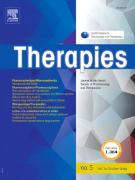Bacterial infections in people who inject psychoactive substances: An observational study in a French university hospital - 19/11/21

| pages | 9 |
| Iconographies | 3 |
| Vidéos | 0 |
| Autres | 0 |
Summary |
Aim of the study |
To describe bacterial infections in injection drug users (IDUs) hospitalized at Montpellier University Hospital, France, and to identify factors that might influence the development of local or systemic infections.
Methods |
This cross-sectional observational monocentric study prospectively included bacterial infections in IDUs hospitalized at Montpellier University Hospital between 2012 and 2018. Types of infection (local or systemic) were described and compared to identify specific features (injection practices).
Results |
The study included 144 bacterial infections (56% of local infections and 44% of systemic infections) concerning 117 IDUs. The most common infection types were abscesses (50%), skin and soft tissue infections (33%), bacteremia/sepsis (20%), endocarditis (17%), and bone and joint infections (16%). Patients were mainly men (n=94; 80%), and the median age was 40 years [IQR25-75: 34-47]. Four deaths related to systemic infection were reported. The most frequent injected substances were cocaine, opioid maintenance treatments (OMT), and opioids. According to the multivariate analysis, factors associated with the occurrence of systemic infections were number of injection (OR 2.59 [1.07-6.27]; P=0.034) and injection of at least one opioid (OR 3.52 [1.28-9.72]; P=0.015).
Conclusion |
Different types of bacterial infections, local or systemic, are observed in IDUs. Skin infections are quite common, but other infection types also are reported, with sometimes serious consequences. It is already known that injection practices are contributing factors in infection development, but the type of injected psychoactive substance(s) also may have an influence.
Le texte complet de cet article est disponible en PDF.Keywords : Substance abuse, Intravenous, Bacterial infections, Harm reduction, Substance-related disorders
Plan
Vol 76 - N° 6
P. 539-547 - novembre 2021 Retour au numéroBienvenue sur EM-consulte, la référence des professionnels de santé.
L’accès au texte intégral de cet article nécessite un abonnement.
Bienvenue sur EM-consulte, la référence des professionnels de santé.
L’achat d’article à l’unité est indisponible à l’heure actuelle.
Déjà abonné à cette revue ?

